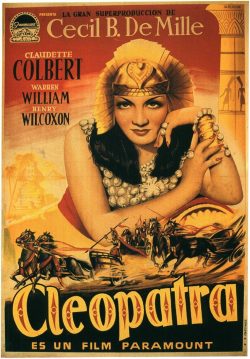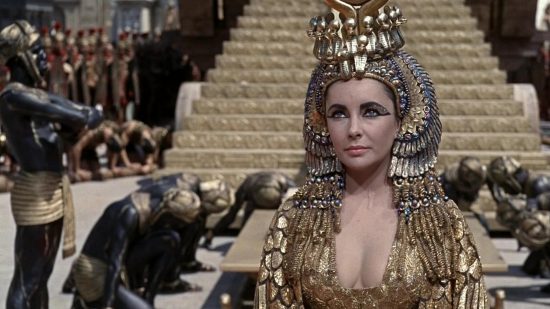A brief history of Cleopatra in film: from 1917-2017
There have been numerous film releases depicting the life of Cleopatra VII. She was the last ruler of the Ptolemaic dynasty, ruling Egypt from 51 BC – 30 BC. After she became Queen of Egypt when she was just 18-years-old, her first task was to resist the sovereign ambitions of Rome. Because of this, there are surprisingly few Egyptian themes within the films about Cleopatra with many of the releases instead focusing on Rome.
Though, in Egypt or Rome, one thing for certain is that Cleopatra has become a historical legend over the past 2,000 years influencing everything from plays to films to literature; there’s even a widely popular Cleopatra slot game.
One of the first Cleopatra releases came in 1917. For its time, it was a hugely popular blockbuster film with elaborate sets and costumes to match. The film became a catalyst for Theda Bara, one of cinema’s earliest sex symbols. However, the film was judged to be obscene by the regulators of Hollywood resulting in all copies being destroyed.
 The 1934 release was produced by Cecil B. DeMille and stars Claudette Colbert, among others. The black and white hit is considered a brilliantly choreographed display, all down to DeMille of course. The filmmaker’s flair and the acting talents of Colbert proved to be a match made in heaven.
The 1934 release was produced by Cecil B. DeMille and stars Claudette Colbert, among others. The black and white hit is considered a brilliantly choreographed display, all down to DeMille of course. The filmmaker’s flair and the acting talents of Colbert proved to be a match made in heaven.
One pertinent criticism of Colbert, despite her obvious confidence and ability, was her lack of Mediterranean quality. Cleopatra returns to Rome with Caeser (Warren William executes his role as Caeser remarkably well) and follows his chariot in a celebratory tour of the city.
It is in Alexandria where DeMille’s real talent for putting on a spectacle shines though, as the Queen of Egypt lures Marc Antony, a Roman politician and general, to his impending doom. The battle of Actium, fought on both land and sea, lets the film down somewhat and is portrayed rather clumsily. Though DeMille does do well in depicting the Queen’s dignified death, Antony’s slow death has far too much dialogue.
Later in 1945 Gabriel Pascal adapted George Bernard Shaw’s 1901 play of Caeser and Cleopatra. However, the combination of stage drama and moviemaking isn’t as good as you may expect.
Vivien Leigh’s role as a flirtatious Cleopatra just doesn’t sit right, though Claude Rains’ role as Caeser depicts the strength of the character quite well. The action scenes of this 1945 release deserve huge credit. Though it was poorly received by Brits, it proved popular to the US audience.
Who better to play Cleopatra in the 1963 blockbuster than the beautiful Elizabeth Taylor? The Queen’s legendary beauty proves more of a blessing than curse as she is forced to exhibit herself as a possession of those in reign.
Ironically, Richard Burton who stars as Marc Antony, also pursued Taylor in real life. Whilst the film was number one at the box office during its debut year, it did little to recuperate its investment and as a result, the studio nearly folded. That said, the audience seemed to love the love affair between Cleopatra and Antony, or rather Taylor and Burton.
Less than ten years later and Antony and Cleopatra was released in 1971, the only Hollywood movie made from Shakespeare’s play. Charlton Heston proved his wealth of talent when adapted the play, directed the movie, and played the lead which in this case was Antony rather than Cleopatra.
The 1999 TV release of Cleopatra is significant due to the modern casting of its characters and it’s fair to say that the film is tailored towards a younger audience. And why not?
The Queen was no more than 22-years-old when she seduced Caeser for her own gain and no more than 39-years-old when she chose to tragically end her life with Antony.










